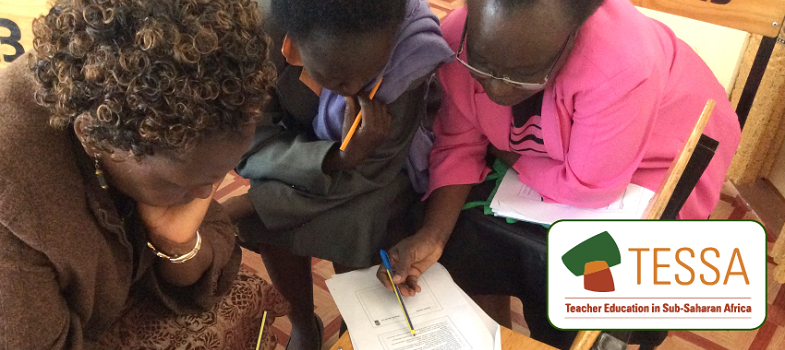Resource 2: Mrs Chosane’s reflections on her approach
![]() Background information / subject knowledge for teacher
Background information / subject knowledge for teacher
Mrs Chosane was on an in-service course on developing positive self-esteem in her classroom with teachers from the local district. As part of the course, they had been asked to keep a diary for two days in the next week and record as often as was possible all the times they praised their pupils and times when they told them off or ignored their behaviour.
They used a chart like that in the table below and put a tick in for each time they did one of these things. Sometimes it was not possible to fill it in during the lesson as it was so busy, but Mrs Chosanekept the chart in the book of her lesson plans so she could do it when she had a moment, or as soon as the lesson finished.
| Lesson | Praise 1 pupil | Praise several pupils | Ignored 1 pupil | Ignored several pupils | Told off 1 pupil | Told off several pupils | |
|---|---|---|---|---|---|---|---|
| Maths | ✓ | ✓ | |||||
| English | ✓ | ||||||
| DAY 1 | Science | ✓ | ✓ | ✓ | |||
| Social Studies | ✓ | ||||||
| Art | ✓ | ✓ | |||||
| Physical Education | ✓ | ✓ |
| Lesson | Praise 1 pupil | Praise several pupils | Ignored 1 pupil | Ignored several pupils | Told off 1 pupil | Told off several pupils | |
|---|---|---|---|---|---|---|---|
| Maths | ✓ | ||||||
| English | ✓ | ✓ | |||||
| DAY 2 | Science | ✓ | ✓ | ||||
| Social Studies | ✓ | ||||||
| Art | ✓ | ✓ | |||||
| Physical Education | ✓ |
When they went to the next course session, they were asked to examine the data and identify which they did most. Did they do more telling off in classes? If so, could they think why?
Through group discussion, the tutor, Mrs Mbatha, asked them to think what they could do to increase the positive atmosphere in their classes. Each group had to list six things they could do to develop the positive classroom atmosphere.
Mrs Chosanesaw from her data that she was more negative with her pupils in science lessons than in other lessons, and wondered why. Maybe it was because she felt less confident of her own knowledge and had not liked science herself. She often felt less organised and more nervous in case the pupils asked her questions.
She made a list of things she could do to help her class and her own interaction with her pupils:
- 1 Have well-prepared lessons.
- 2 Check my own subject knowledge.
- 3 Think about what questions to ask the pupils and what answers to expect.
- 4 Think of ways to accept their answers, for example:
- (a) ‘That’s an interesting idea, but can you think a little more about…’ and then ask the first question again in a different way.
- (b) ‘I hadn’t thought of that idea – how could we link it to my first question?’
- With each of these, the pupil is encouraged to think more and participate more and is not told that they are stupid or wrong.
- 5 Give my pupils the chance to raise their own questions about a topic if they don’t understand. Allow other pupils to give answers to these rather than just me.
Gradually, over the next few weeks, she became more confident and found that because she was better prepared, she didn’t get as anxious and therefore she shouted less. Her pupils began to enjoy their science lessons more and more.
Resource 1:Reflecting on your behaviour



